All products featured are independently chosen by us. However, SoundGuys may receive a commission on orders placed through its retail links. See our ethics statement.
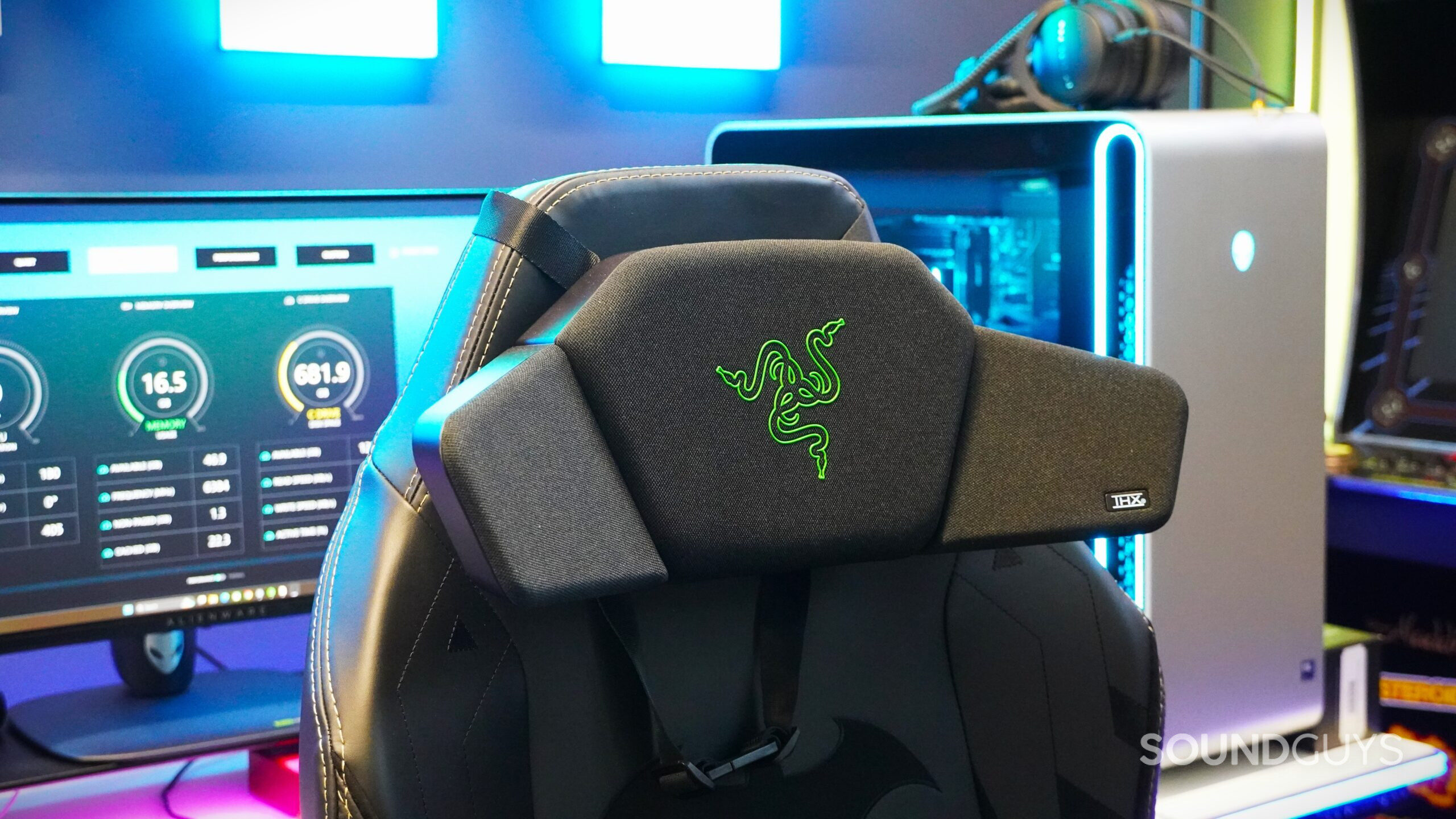
I tried Razer's first surround sound head cushion, and the Clio has a big caveat
June 24, 2025
Razer Clio Wireless Speaker Head Cushion
Weight: 1,260.0g
Surround sound audio has become a must-have feature for many gamers, whether they’re looking to enhance the immersion of single-player experiences or gain that competitive edge in multiplayer games, pinpointing the precise location of enemy footsteps creeping up behind them. Because building a full Dolby Atmos home theater is expensive and time-consuming (believe me, we did it), most gamers settle for a gaming headset that’s good enough to get the job done. But for those who want something in between, Razer has an interesting solution: a wireless speaker designed to attach to your gaming chair that doubles as a head cushion.
Whether you want to use it standalone with THX Spatial Audio, as a dedicated rear channel paired with your existing desktop speakers, or even a larger 7.1 surround sound setup, the Razer Clio promises to have you covered. However, one major design oversight might prevent you from integrating it into your gaming setup.
The Razer Clio is designed for a very specific type of gamer: those who primarily play immersive single-player games like Cyberpunk 2077 or atmospheric RPGs, own a gaming chair with a narrow headrest (under 9 inches wide), game alone in a private space where sound leakage won’t disturb others, and want the spatial audio benefits of surround sound without wearing headphones for extended periods. If you frequently play multiplayer games, need voice chat functionality, share your gaming space with others, or own popular wide-backed chairs like the SecretLab Titan Evo, this product likely isn’t for you.
This article was updated on June 24, 2025, to add our video review.
What I like about the Razer Clio
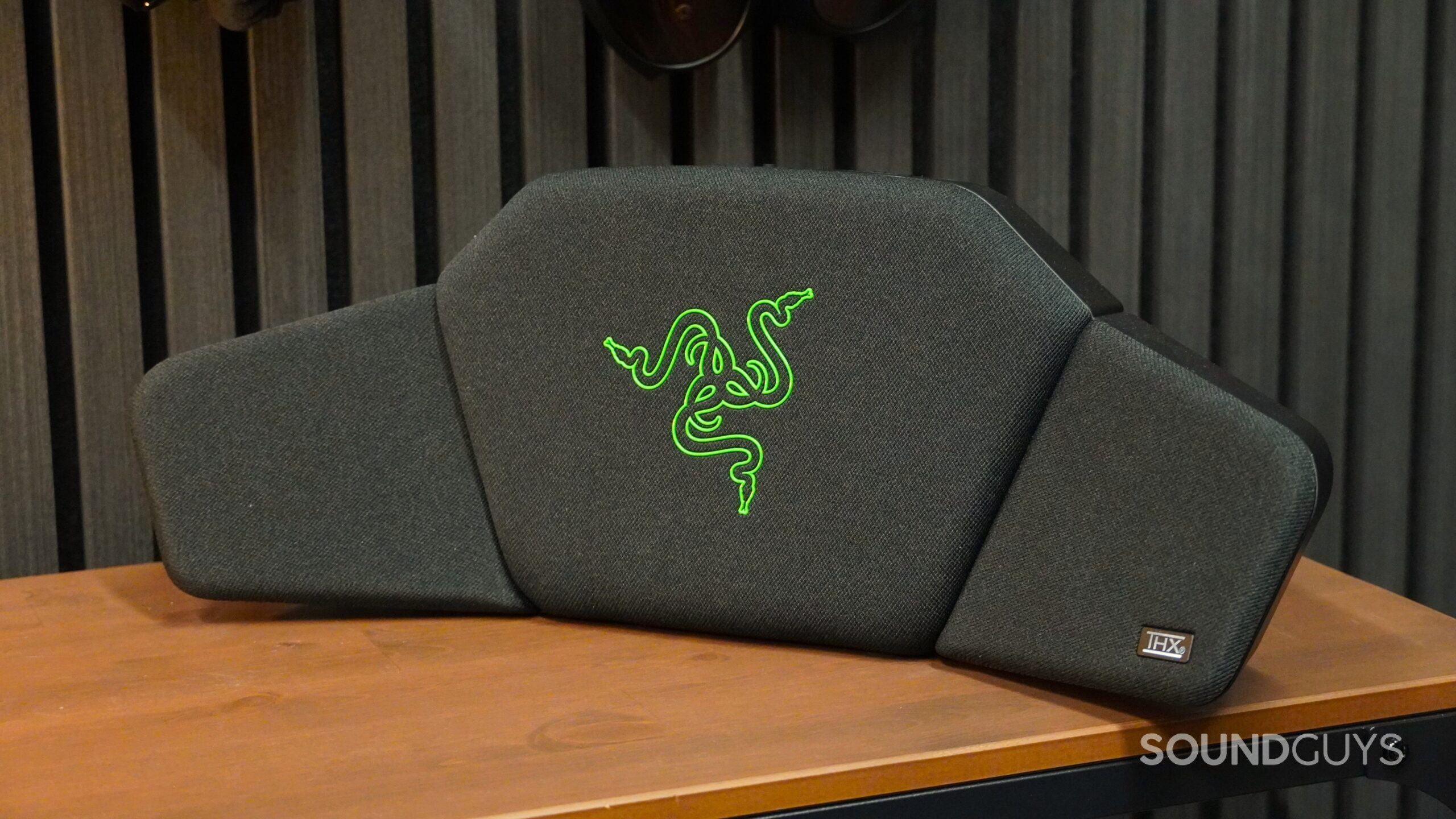
The Razer Clio performs admirably as both a head cushion and a wireless speaker. While it’s not as comfortable as the memory foam head pillow that came with my SecretLab Titan Evo gaming chair, nor does it provide neck support, it’s plush enough to rest my head against without discomfort. Despite housing two 43mm full-range drivers, it remains relatively lightweight and isn’t overly bulky. The angled speakers create a near-field listening experience that feels more personal and discreet than traditional desktop speakers.
The Razer Clio is dual-wireless, meaning it comes with a USB-C dongle to support a low-latency 2.4GHz wireless connection for PC or console gaming and Bluetooth 5.2 for other devices. Switching between the two is as easy as pressing a button, and I often took breaks between gaming sessions to lie back and stream music from my phone. The physical controls on top of the cushion are well-positioned and responsive. Beyond source-switching, volume and EQ cycling are easily accessible. There are three EQ presets (Gaming, Movie, Music) as well as a custom equalizer within the Synapse app. Gaming mode cuts bass to emphasize tactical audio cues, while Movie mode boosts the low end for more immersive content.
Speaking of Synapse, you’ll need to download it to use the speaker in 2.4GHz mode and connect it to any front-firing speakers you have. Synapse 4 makes switching between Primary Speaker Mode and Surround Speaker Mode straightforward, with independent EQ control for front and rear speakers when running surround setups.
The THX Spatial Audio implementation genuinely works when paired with front speakers like a soundbar or desktop speakers, and performs even better when you add a subwoofer. I paired the Razer Clio with the Razer Nommo V2 Pro to get the complete package, but again, you don’t need to use Razer products; you can use anything. Testing the initial THX demo in Razer Synapse revealed convincing positional audio—gunshots, footsteps, and environmental sounds clearly came from different directions around you. The left/right and front/back localization is notably better than traditional headphone surround processing, creating a more authentic spatial experience for immersive single-player games.
Cyberpunk 2077 convinced me that this was how the game was always meant to be heard and played.
Real-world gaming performance varies significantly depending on the type of game and how well it’s optimized for surround sound. In fast-paced, chaotic titles like Doom: The Dark Ages, the constant barrage of combat audio tends to wash together, reducing localisability and making the spatial benefits less noticeable. However, games specifically designed with immersive audio in mind truly shine. Cyberpunk 2077 became incredibly engaging with the full 7.1 surround setup, where ambient city sounds, dialogue, and effects created convincing spatial depth and envelopment. The immersiveness of walking through Night City’s bustling streets, with traffic passing from left to right and conversations happening at various distances, convinced me that this was how the game was always meant to be heard and played.
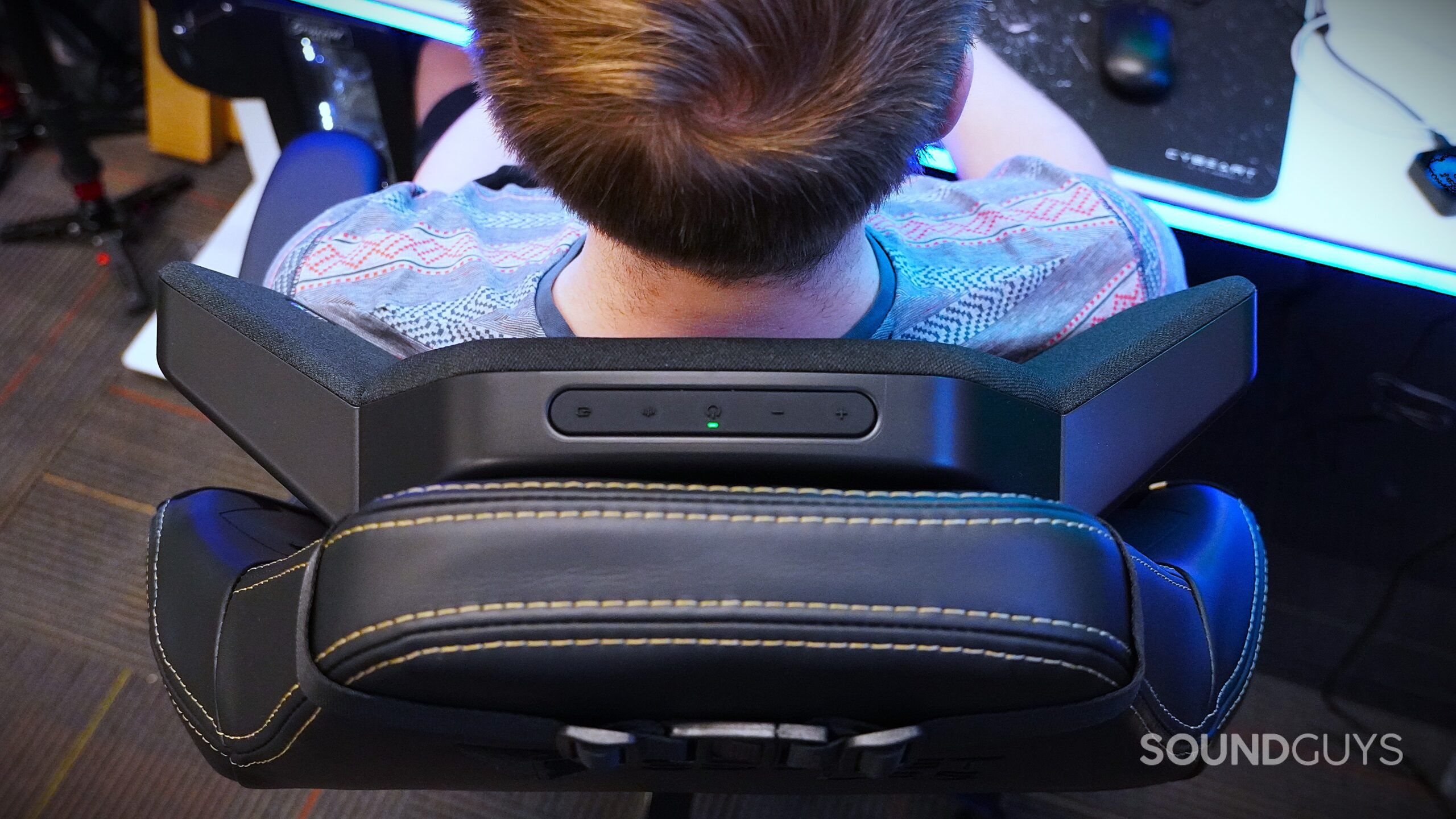
Competitive gaming sees more practical benefits. In Halo Infinite, the superior localisability allowed me to clearly detect enemy footsteps approaching from behind, giving me the tactical advantage to turn around and eliminate unsuspecting opponents. The rear positioning creates excellent width in the soundstage, making it much easier to pinpoint directional audio cues compared to traditional gaming headsets, where sounds can feel more internal.
The Clio enhances the atmosphere for more relaxed gaming experiences, which is nice to have but not essential. Expedition 33’s immersive soundtrack benefited from the enhanced envelopment and spatial depth, though as a turn-based RPG, precise localizability wasn’t crucial for gameplay. Even arcade-style games like Tony Hawk’s Pro Skater 3+4 became more enjoyable—I found myself switching to Music EQ mode just to vibe to the excellent soundtrack while skating, where the width of the stereo field made the music feel more open and natural.
What I don’t like about the Razer Clio
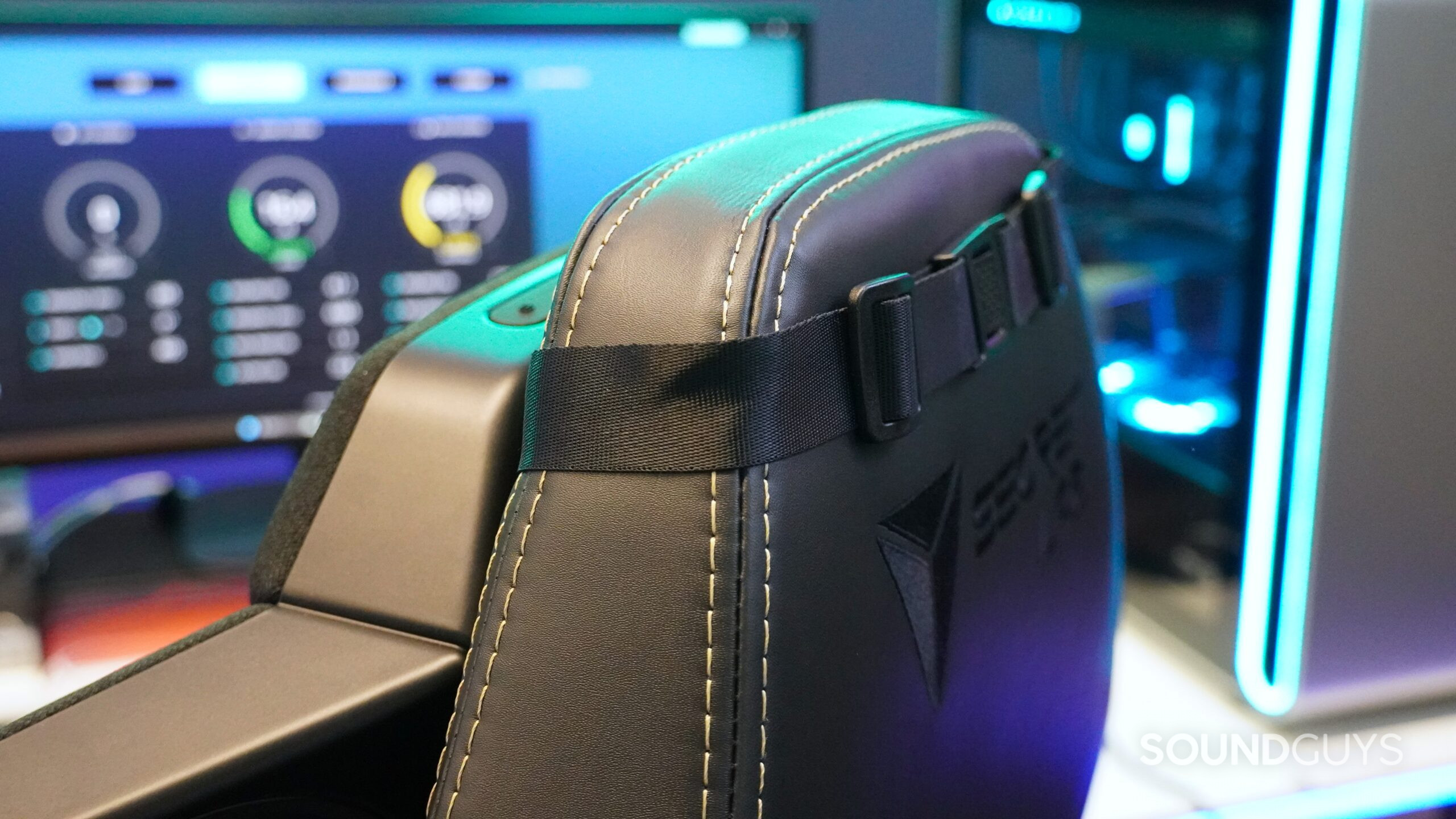
Razer advertises the Clio to attach to “most high-back gaming and office chairs,” but unfortunately, that didn’t match my experience whatsoever, and it seems I’m not the only one. Using the SecretLab Titan Evo, one of the most popular gaming chairs on the market, the “adjustable” straps on the back of the Clio are just too short to fit around the 12-inch-wide chair back. I could barely hang the speaker by the top strap, which was precarious and not at the ideal height behind my head. I also tried strapping the Clio to another gaming chair in our office with a 10-inch-wide headrest, but the straps were still inadequate.
Because the straps are built-in and not detachable, swapping them out for longer third-party straps is impossible. There also aren’t any magnets on the head cushion to help secure it to compatible chairs that way. This design oversight is a significant limitation that will prevent many users from integrating the Clio into their gaming stations unless they already own a Razer chair.
The straps don't fit most popular gaming chairs, despite Razer's compatibility claims.
Even if you manage to mount the Razer Clio speaker on the back of your gaming chair, I found that volume balancing required a lot of tinkering within Synapse. The cushion speakers are noticeably quieter than typical desktop speakers, requiring significant volume increases to match. However, pushing the system volume above 80% makes distortion apparent from both the Clio and the paired speakers. At its 85dB max SPL, the Clio can get reasonably loud but lacks the headroom of quality desktop speakers. Because these are open speakers positioned near your head, sound leakage is inevitable and significant. Anyone in the same room will clearly hear your audio, making this unsuitable for shared spaces or office environments. This becomes particularly problematic for multiplayer gaming and streaming.
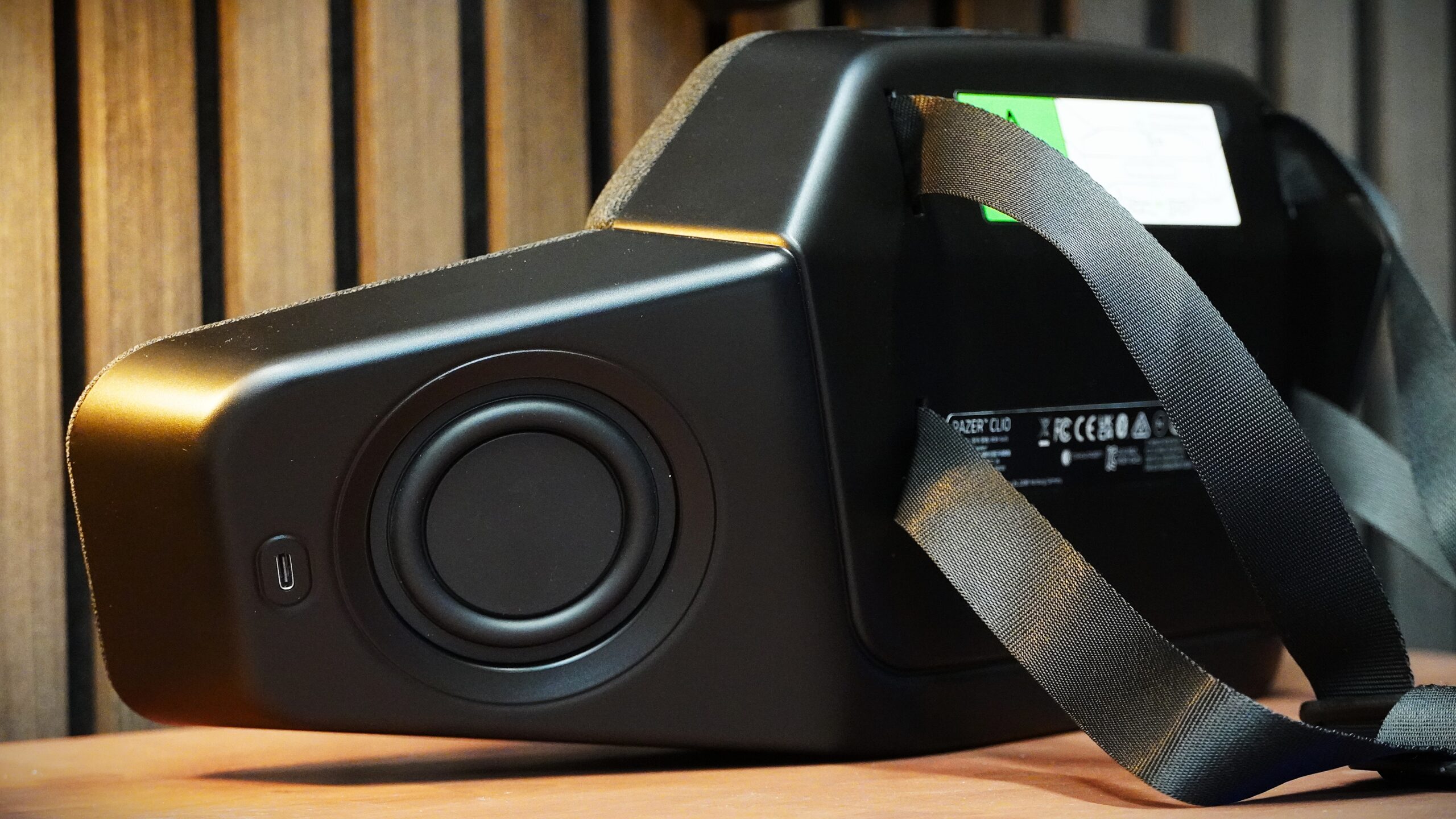
If you’re using an external microphone, which you’ll need since the Clio doesn’t have one, that mic will pick up the audio from the nearby speakers, creating feedback loops during voice chat. Content creators and streamers will find this especially frustrating, as the sound leakage can ruin audio quality for recordings or live streams. Even gamers using push-to-talk might struggle with ambient audio bleeding into their communications. Essentially, the Clio forces you to choose between immersive surround sound and clear voice communication, making it impractical for most multiplayer scenarios where teamwork and coordination are key.
Despite Razer’s advertised 14 hours of playback, I achieved only about 9 hours of actual use during testing. The USB-C port is located on the back of the cushion, making charging while mounted awkward unless you have an exceptionally long cable to run up the chair. Most users will need to remove the cushion entirely to charge it, interrupting gaming sessions when the battery runs low.
Should you buy the Razer Clio?
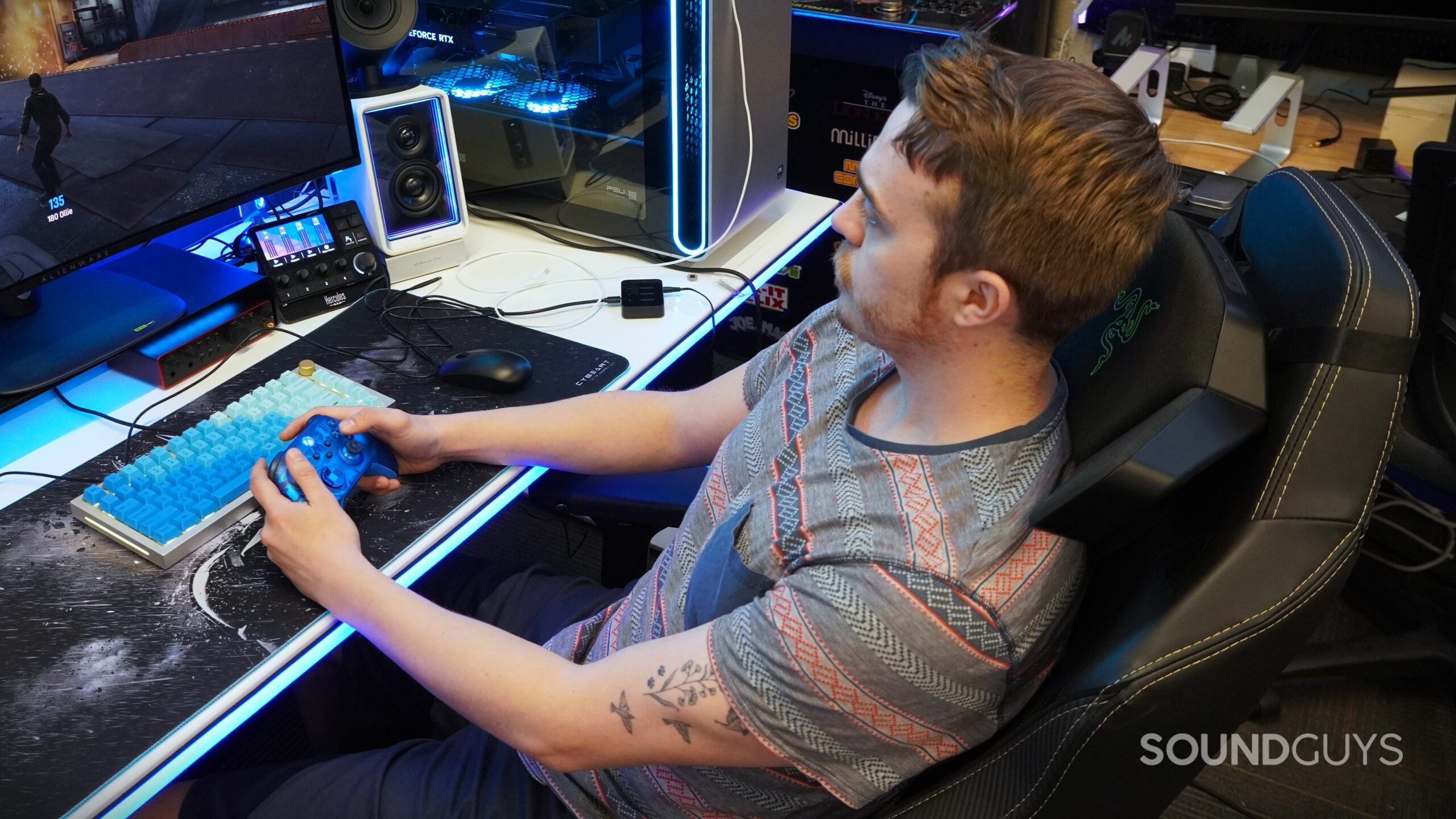
The Razer Clio delivers on providing surround sound gaming audio without the expense and complexity of a full home theater system. The surround sound experience is genuinely convincing, and the head cushion is comfortable for extended gaming sessions and casual music listening. However, significant practical limitations prevent it from being an easy recommendation.
At $230, you're paying premium prices for a product that may not even physically work with your setup.
The chair compatibility issue alone makes this product unusable for many gamers, despite Razer’s claims of broad compatibility. At $230, you’re paying premium prices for a product that may not even physically work with your setup. If your gaming chair has a back wider than 9 inches, the straps simply won’t fit—and that includes most popular models like the SecretLab Titan Evo.
For those with compatible chairs who primarily play immersive single-player games like Cyberpunk 2077, the Clio genuinely enhances the experience with convincing spatial depth and envelopment. For the right user, the ability to game for hours without headphone fatigue while maintaining surround sound positioning is compelling.
I can only recommend the Razer Clio to gamers with narrow-backed chairs who prioritize single-player immersion over multiplayer communication. For everyone else, the mounting limitations make this an expensive experiment that likely won’t work with your existing furniture.

Thank you for being part of our community. Read our Comment Policy before posting.